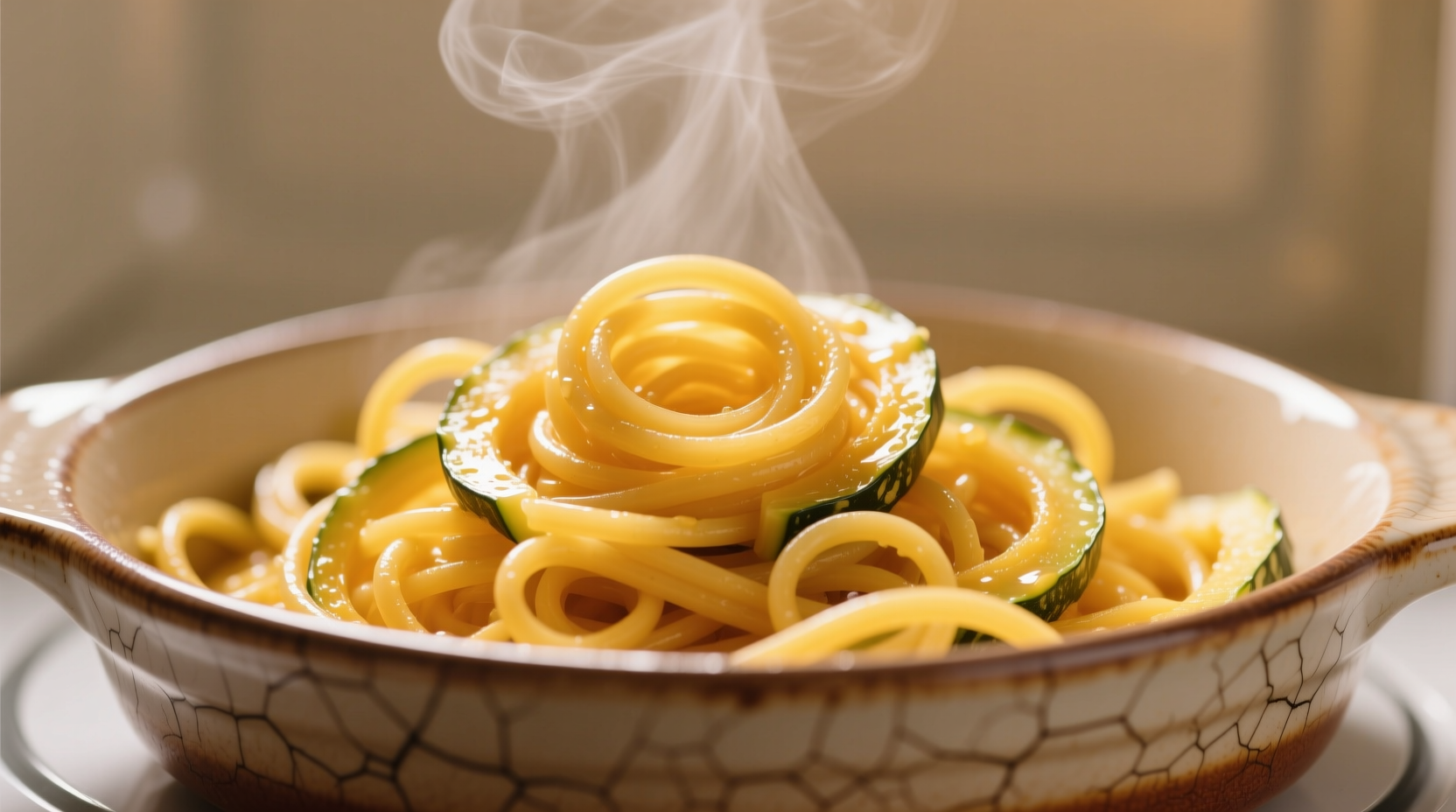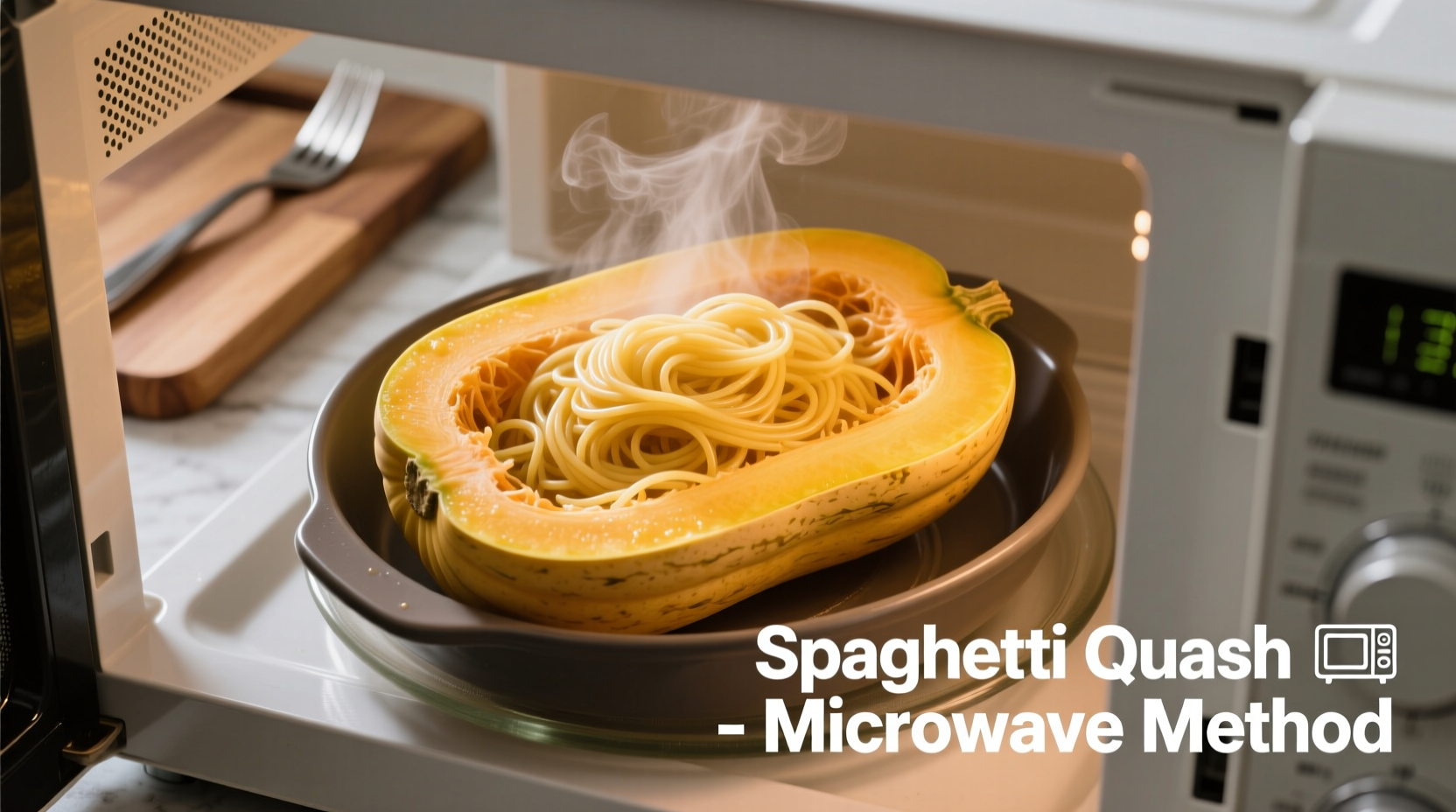Discover the fastest, most efficient way to prepare spaghetti squash without heating up your entire kitchen. As a professional chef who's taught thousands of home cooks to master simple kitchen techniques, I've perfected this microwave method through years of testing different varieties and sizes. You'll get perfectly separated strands every time—ideal for healthy pasta alternatives.
Why Microwave Spaghetti Squash Instead of Oven Roasting?
While traditional oven roasting takes 45-60 minutes, microwaving delivers comparable results in under 20 minutes. According to USDA Food Safety guidelines, microwaving vegetables preserves more water-soluble nutrients like vitamin C and B vitamins compared to boiling. The controlled steam environment inside your microwave creates ideal conditions for spaghetti squash's delicate strands to separate naturally.
| Cooking Method | Time Required | Energy Used | Strand Separation |
|---|---|---|---|
| Microwave | 15-20 minutes | 0.5 kWh | Excellent |
| Oven Roasting | 45-60 minutes | 2.0 kWh | Good |
| Boiling | 20-25 minutes | 1.0 kWh | Poor (waterlogged) |
Your Step-by-Step Microwave Spaghetti Squash Guide
Preparation Phase: Setting Up for Success
Proper preparation prevents common microwave cooking failures. Select a medium squash (2-3 pounds) with firm, unblemished skin—the ideal size for even cooking. Never attempt to microwave a whole squash; pressure buildup could cause dangerous explosions as documented by the USDA Food Safety and Inspection Service.
Safe cutting technique:
- Place squash vertically on stable cutting surface
- Use sharp chef's knife with downward sawing motion
- Stabilize with non-cutting hand using "claw grip"
- For difficult squash: Microwave 2 minutes first to soften

Cooking Phase: Perfect Timing Every Time
Place halves cut-side down in microwave-safe dish with 1/4 cup water. The water creates steam that cooks the squash evenly while preventing drying. For a 2.5-pound squash, microwave on high for 18-22 minutes. Adjust timing based on your microwave's wattage:
- 700-800W: Add 2-3 minutes to standard timing
- 900-1000W: Follow standard timing
- 1100W+: Reduce timing by 1-2 minutes
Check for doneness by inserting fork into thickest part—you should meet slight resistance but fork should slide in easily. Undercooked squash won't separate properly; overcooked becomes mushy. Let rest 5 minutes before handling—the residual heat continues cooking the strands to perfection.
Post-Cooking Phase: Getting Perfect Strands
Use extreme caution when removing the hot dish—microwave-safe containers can become dangerously hot. Allow 3-5 minutes for initial cooling. To extract strands:
- Hold squash half steady with oven mitt
- Use fork to scrape from top to bottom in long strokes
- Rotate squash quarter-turn after each pass
- Stop when you reach the tough outer skin
For best texture, drain strands in colander for 2-3 minutes to remove excess moisture. This prevents watery dishes when saucing. Store leftovers in airtight container for up to 5 days—perfect for meal prep.
Troubleshooting Common Microwave Issues
Problem: Squash cooks unevenly
Solution: Rotate dish halfway through cooking time. Larger squashes benefit from 90-degree turns every 5 minutes.
Problem: Strands remain stuck together
Solution: Undercooking is the culprit. Add 2-minute increments until fork slides in with slight resistance. Different varieties have varying densities—Delicata types cook faster than Sweet Dumpling.
Problem: Excess water in dish
Solution: This is normal steam condensation. Simply drain strands after cooking. For drier results, reduce water to 2 tablespoons next time.
Delicious Serving Suggestions
Microwave-cooked spaghetti squash shines with simple preparations. Try these chef-recommended combinations:
- Classic Italian: Toss with olive oil, garlic, fresh basil, and cherry tomatoes
- Protein Power: Mix with lean ground turkey and marinara sauce
- Breakfast Option: Top with fried egg and everything bagel seasoning
- Meal Prep: Portion into containers with grilled chicken and pesto
For enhanced flavor absorption, season strands while still warm—they'll soak up flavors better than cooled squash. The microwave method preserves the squash's natural sweetness better than boiling, making it ideal for both savory and slightly sweet preparations.











 浙公网安备
33010002000092号
浙公网安备
33010002000092号 浙B2-20120091-4
浙B2-20120091-4